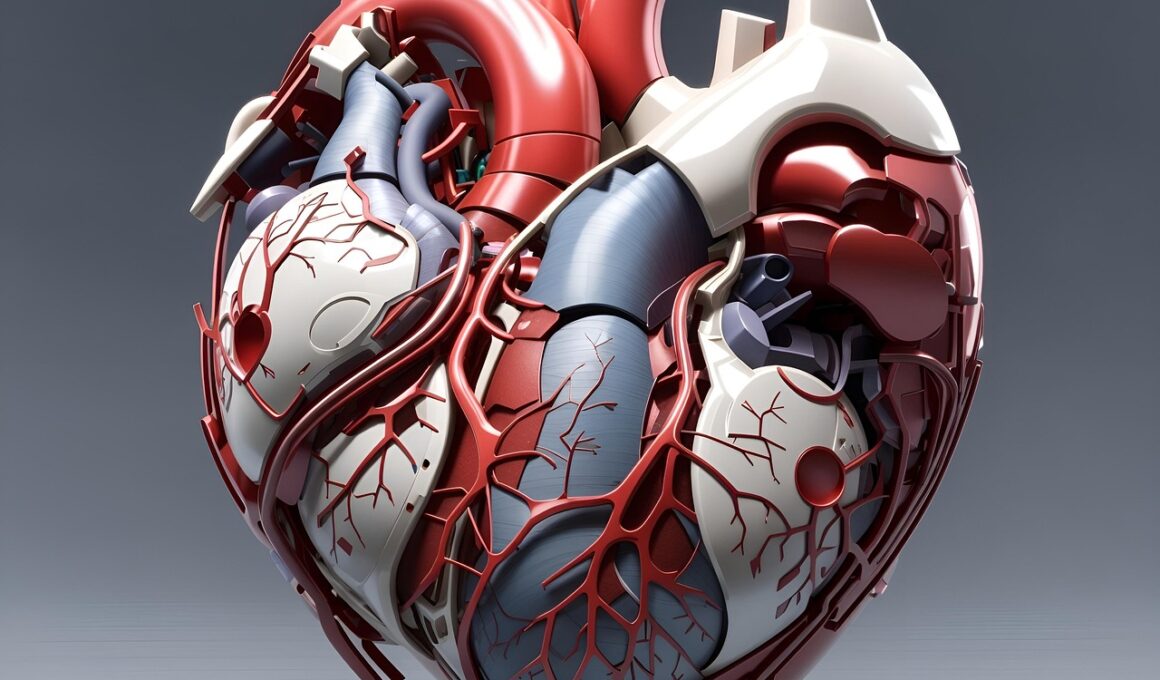Why Rest Days Are Essential for Cardiovascular Health
Incorporating rest days into your cardiovascular training is pivotal for overall health and fitness. Despite the enormous benefits of regular cardiovascular activities, resting is equally important. Active recovery significantly contributes to muscle repair and restoration. It is during the rest days that your muscles rebuild, thereby becoming stronger. Overtraining without sufficient rest leads to fatigue and underperformance. When combined with cardio, this can result in injuries or burnout. It’s critical to find a balance, allowing your body to recuperate fully. Failure to do so not only affects physical performance but also mental well-being. Understanding the relationship between exercise and rest is vital. Fostering a consistent routine means you must also plan recovery times, enabling sustained performance over time. Furthermore, rest aids in stabilizing heart rate and improving cardiovascular endurance. Implementing specific rest periods in your training schedule minimizes soreness and prepares your body for the demands of future activities. Lastly, acknowledging that rest isn’t laziness but a necessary part of a well-rounded regimen contributes to long-term fitness success. Prioritizing recovery will lead to better cardiovascular adaptations and improvements in overall health.
Benefits of Rest Days
Exploring the benefits of rest days underscores their importance in cardiovascular training. Initially, rest helps to prevent overuse injuries that can occur due to repetitive strain. By taking adequate rest, you reduce the risk of strains and sprains that can hinder progress. Additionally, having planned rest days improves muscle recovery by allowing tissues to heal and regenerate. This physiological process enhances your overall athletic performance. Moreover, mental recovery is equally important; continuous training can lead to burnout. Scheduling rest allows you to mentally recharge, helping you to return fresher and more motivated. Increased focus and enthusiasm are often observed post-rest days. Improved sleep quality is another notable benefit, as adequate rest can enhance nocturnal recovery processes. This directly influences your cardiovascular health by improving heart function. Also, consistent rest days can stabilize your emotional state, reducing anxiety often associated with rigorous training. Lastly, these breaks can assist in building healthy habits by making physical activities more enjoyable, preventing training fatigue. Understanding these intangible benefits can positively impact your dedication to maintaining a balanced exercise routine, fostering long-lasting commitment.
Understanding Active Recovery
Active recovery is an integral part of cardiovascular training. Rather than complete rest, active recovery includes low-intensity activities performed on your rest days. Activities such as walking, cycling, or yoga stimulate blood flow while minimizing muscle soreness. This mild movement encourages the removal of metabolic waste products from working muscles, accelerating recovery. Studies suggest that active recovery helps to maintain an individual’s fitness level without overexerting. Furthermore, it serves as a useful strategy for preventing the stagnation that can occur during rest phases. Implementing active recovery can also improve overall mobility and flexibility. By gently engaging in physical activity during rest, you maintain muscle activation, which can enhance subsequent performance. Additionally, this method helps individuals stay mentally engaged without feeling guilty about not working out. It forms part of a holistic approach to training, where the aim is to improve performance while prioritizing bodily health. Active recovery strategies can vary based on fitness levels. Engaging with different options helps individuals discover what suits best. Lastly, understanding the mechanics of active recovery empowers people to personalize their fitness journey effectively.
Effect on Cardiovascular Endurance
The effect of rest days on cardiovascular endurance is noteworthy. Adequate recovery allows the body to adapt to the stresses placed during cardiovascular exercise. This adaptation process enhances the efficiency of the heart and lungs, enabling them to provide oxygen and nutrients more effectively. The result is improved endurance levels during future workouts. Additionally, utilizing rest days helps maintain hormonal balance. Hormones like cortisol can spike due to overtraining, negatively impacting endurance. Lowering high cortisol levels through rest can lead to better performance and recovery. Furthermore, rest days offer time for better muscle glycogen replenishment, which is crucial for sustained energy during cardiovascular activities. Without sufficient rest, glycogen stores may remain depleted, hampering endurance performance. Emotional stability is also an essential factor. High-intensity workouts without necessary rest can lead to increased stress levels, further compromising overall cardiovascular health. Understanding this intricate relationship between rest and performance can influence training strategies for optimal results. It is vital to appreciate that recovery is not antagonistic but a catalyst for improvement. Thus, allowing for a balance between effort and rest can produce vibrant cardiovascular health and peak performance.
Creating a Balanced Training Schedule
Creating a balanced training schedule is essential for maximizing cardiovascular fitness. A successful training program incorporates both workout and rest days strategically. By outlining training sessions, you can better determine when to insert critical rest periods. Aim for a schedule that includes progressive overload while allowing recovery times. A common practice is the inclusion of high, moderate, and low-intensity days throughout the week. Moreover, scheduling specific types of cardio, such as intervals or long-distance runs, can help diversify your training. Allow at least one or two full rest days every week to promote overall health. Furthermore, active recovery days should also be part of the mix, utilized on days between intense workouts. This approach not only aids recovery but also minimizes exertion fatigue. Keeping track of how your body responds to different intensities is crucial; adjust your training schedule as needed. Engaging in community support, like joining a fitness group, helps in maintaining accountability. Such a schedule provides a sense of direction and purpose. Personalizing it to fit individual goals and lifestyles can significantly enhance motivation and consistency in pursuing cardiovascular health.
Listening to Your Body
Listening to your body involves recognizing its signals regarding rest and exertion. Athletes and fitness enthusiasts should develop heightened awareness of their physical condition. Signs like fatigue, soreness, or lack of enthusiasm may indicate the need for a rest day. Paying attention to these signals is crucial for long-term success in cardiovascular training. Ignoring your body’s messages can lead to diminished performance and increased injury risk. Additionally, emotional cues play a role—feeling overly stressed or overwhelmed may also necessitate taking a day off. Maintaining an adaptive attitude towards your training plan fosters better fitness habits. Flexibility in adjusting workout expectations based on current energy levels ensures that your routine remains sustainable. Use self-assessment tools, like journals or fitness apps, to track changes in mood and performance. Ultimately, providing appropriate rest contributes to a better workout experience. Understand that every individual responds differently to exercise and recovery. Establishing a balance between exertion and recovery is key. Continuous adaptations based on personal feedback can lead to optimal cardiovascular health and enhance physical activity enjoyment.
Final Thoughts on Cardio and Rest
In conclusion, understanding the relationship between cardiovascular training and rest is fundamental to achieving fitness goals. Cardiovascular health thrives on balance, integrating both exercise and adequate recovery. Insufficient rest can drastically undermine the benefits derived from your training efforts. Through rest, not only is muscular recovery facilitated, but overall cardiovascular adaptation is promoted. By establishing an individual training schedule that promotes active recovery, individuals can enjoy sustained fitness without burnout. The pursuit of cardiovascular health should not merely focus on achieving higher intensity workouts, but prioritize a holistic approach. This encompasses the necessity of downtime—integrating both mental and physical recovery. Make efforts to prioritize recovery days within your regular exercise routine, enhancing not just performance, but overall enjoyment of fitness. The dialogue around rest within the fitness community must shift, encouraging perceptions of rest as an integral part of health. Ensuring a commitment to balanced training will optimize your progress. Ultimately, this thoughtful integration fuels lifelong cardiovascular fitness and well-being, fostering a healthier relationship with exercise and life.
Overall, invest time in planning your routine rather than leave it to chance. This will yield significant results over time. Incorporate these principles to ensure that your journey towards cardiovascular fitness is both effective and enjoyable.


